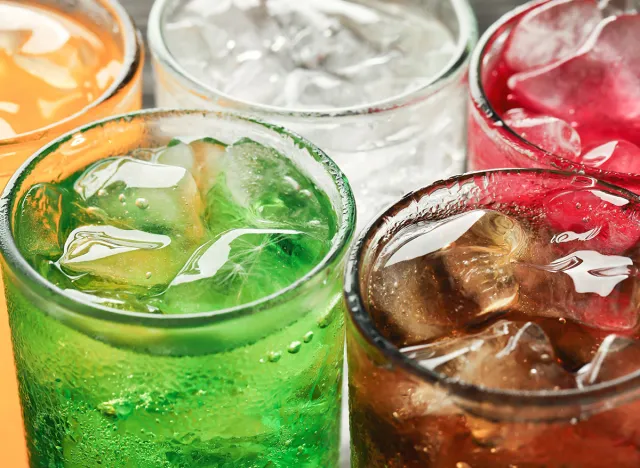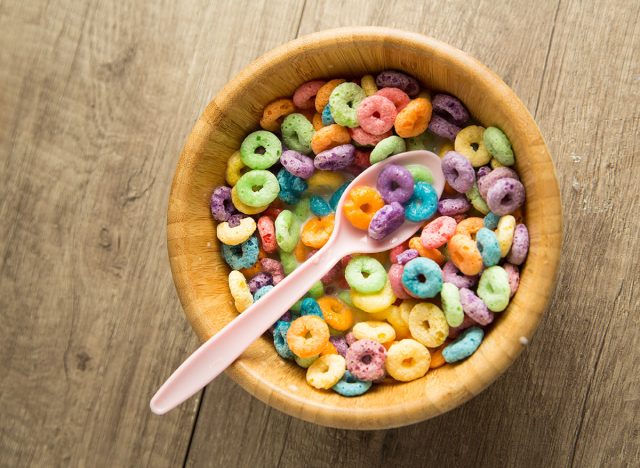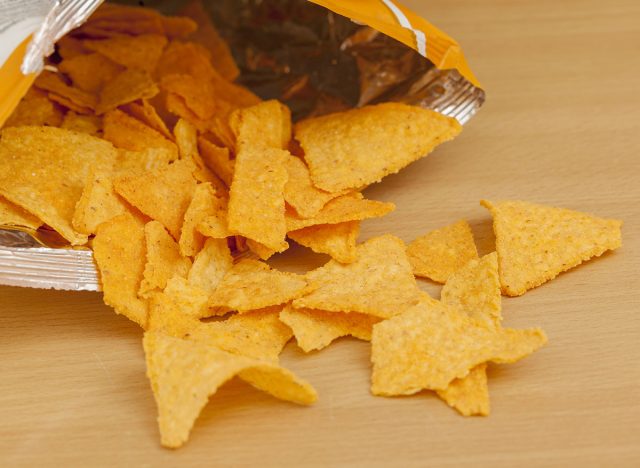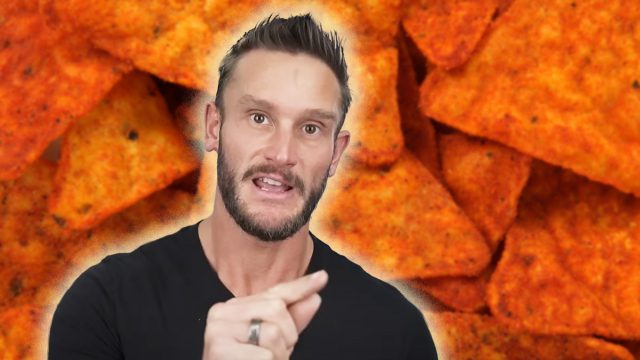8 Foods I Will Never Eat Again After Losing 110 Pounds
Do you want to lose weight but aren't sure what to eat and what to avoid? Thomas DeLauer (@ThomasDeLauerOfficial) is a YouTuber with over 3.68 million subscribers who share content about how to improve your life and who lost over 110 pounds. In one of his viral videos, he shares some of the types of food that used to be a big part of his diet but he avoids at all costs now. "Here are some foods I just flat out will never, ever eat again," he says in the clip.
There Are 8 Foods He Wishes He "Had Never Eaten"
"I actually have a pretty relaxed diet. I eat little bits of things that I get enjoyment out of pretty much every day so that I don't feel the need to go totally ham on them for two or three days straight, right?" he says. "And candidly, there are foods that when I look back at my past, I just, I wish I had never eaten. So, let's go ahead and jump in. I don't mean to fear monger, that's not my style, but there are just a few foods that just, they just don't ever make it on my list anymore."
RELATED: I Lost 45 Pounds and Got Into the Best Shape of My Life in 90 Days With These 9 Steps
Margarine & Shortening
Margarine and shortening is the first on his list. "The trans fats that are in margarine and shortening, these are horrible," he says. "It's pure hydrogenated oil, which means they've taken an oil and artificially turned it into a solid. Our body doesn't know how to utilize that." He maintains that it can take 50 days for your body to break them down. Trans fat has also been linked to visceral fat accumulation, "which, outside of just being a pot belly and being unsightly, is one of the most metabolically active tissues in the body. When you form visceral fat, it is pretty much a guarantee that you're going to have increases in inflammation and increases in metabolic disease risk," he says. Instead, he uses butter, ghee, and coconut oil.
Pudding Cups
"Another one that I won't ever eat again after understanding the gut barrier, not the gut biome, is instant pudding or pudding cups," he says. Why? They have emulsifiers in them, including polysorbate 20, polysorbate 60, and polysorbate 80. "There is a study published in the European Journal of Allergy and Immunology that found that just a 1% solution of polysorbate 20 or polysorbate 80 led to a complete disruption of the gut barrier," he says. "So flat out, I avoid emulsifiers and instant puddings, and pudding cups are full of them."
Soybean Oil Foods
Next up, "any kind of shelf-stable food that has soybean oil in it," he says. "Now, the things I'm talking about are mainly going to be things like tomato sauce. If I'm buying marinara and there is soybean oil in it, I know pretty much for a fact that soybean oil has gone rancid." He explains that soybean oil "is a very unstable polyunsaturated fat" and has been linked to increases in liver markers. "Liver stress markers are linked to increases in fat mass, decreases in glucose tolerance, and increases in fasting glucose actually causing metabolic issues," he says.
Regular Soda

"Another thing I will never drink is a regular soda," he says, pointing out there are lots of other options that don't have high fructose corn syrup in them. "Anything that has high fructose corn syrup, I will just not touch," he says, citing a study published that took a look at the effect of high fructose corn syrup versus sucrose on the brain. "It was found that sucrose regular sugar mildly impaired brain memory and function, but high fructose corn syrup significantly impaired memory and learning and the ability to solve tasks."
RELATED: 10 Weight Loss Secrets French Girls Don't Want You to Know
Fruit Loops

Next up, Fruit Loops. "I used to eat them a lot, believe it or not, especially when I was overweight, and I'll never touch them again" – and not because of the sugar. It's because of red dye number 40, which has been linked to behavioral issues and hyperactivity in kids. "When you look at adults, it's a little bit different. You might see instances of neuroinflammation," he says.
Mayonnaise
Next up, mayonnaise. While he will eat mayo from Primal Kitchen or from Chosen Foods, he won't eat the regular kind that is "just nasty soybean oil that has been sitting on a shelf forever."
Doritos

Next up, Doritos. "It's just a gateway food, and it's something I used to eat flat out. No way." He says it is high in fat, sugar, artificial colorings, and MSG, "which is making you want to eat more of them" and "lights your brain up like a Christmas tree and it's gonna make you want to eat more and that can't be good."
Gluten
The last one? "I don't eat gluten. I won't eat food with gluten. Why? Because I know how wheat is harvested here in the United States," he says. "When I eat gluten, I am sick. When I eat gluten, my joints hurt. And when I eat gluten, my brain is foggy," he says. However, he maintains that the gluten in Europe doesn't seem to have the same effect. "Something is happening here. Maybe it's the glyphosate. Maybe it's the relationship with Prolein. Maybe it's the fact that we overconsume wheat so much that we start to build antibodies. There are all these different theories, and they all kind of make sense," he says.
RELATED: How to Burn 800 Calories Per Day Without Exercising, According to a Neuroscientist
Follow Him on Social Media
For more of Thomas DeLauer's health tips, you can follow him on social media. Here is his YouTube channel, Instagram, and website. And if you enjoyed this article, take advantage of these 15 Quick Ways to Lose Body Fat Percentage in a Week.





